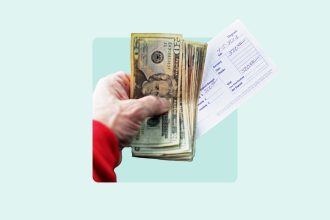Johner Images/Getty Images
Key takeaways
- Federal student loans are in default if you haven’t made a payment in 270 days.
- It is possible to get out of default by rehabilitating your loans or consolidating them through the Direct Consolidation Loan program.
- When you consolidate defaulted student loans can stop the default from doing continued damage to your credit score.
If you’re one of the five million borrowers who have defaulted on their federal student loans, the Direct Consolidation Loan program can get you back on track. To qualify, you must make three consecutive payments or sign up for an income-driven repayment plan and, once approved, your defaulted federal student loans get rolled into one.
A major benefit of consolidating is you get a low, affordable monthly loan payment and you can protect your credit score from further damage. However, you’ll need to decide between rehabilitating your federal student loans or consolidating them.
Can I consolidate a defaulted student loan?
If you have federal student loans, you’re officially in default if you haven’t made your scheduled student loan payments in 270 days or missed a Perkins Loan payment. At that point, your entire balance plus interest and fees will be due, and your loan servicer may also add collection fees on top of that.
Fortunately, there are a couple of ways to get out of default: You can rehabilitate your federal student loans or consolidate them through the Direct Consolidation Loan program. You may consolidate any defaulted federal student loan, with one exception. Defaulted Direct Consolidation Loans may be consolidated again only if you add another loan to the consolidation.
This applies only to federal student loans — private student loans cannot be consolidated in the same way. The specific rules for getting out of default depend on your lender.
Consolidating your defaulted federal student loans is a relatively straightforward process, which makes it a good option for getting out of default.
Pros of consolidating
- You can get on a more affordable repayment plan.
- Your student debt will no longer be due in full.
- You can stop the default from doing further damage to your credit score.
- You may be able to reduce your collection costs.
- You may become eligible for loan forgiveness
Cons of consolidating
- Unlike with rehabilitation, the default will remain on your credit reports after you consolidate them.
- It may not help if you were previously on an income-driven repayment plan.
- You may still owe collection costs.
- Outstanding interest and fees will be capitalized and added to your student loan balance.
- Certain loan benefits may no longer be available
How to consolidate defaulted student loans
If you have federal student loans, you’ll apply for loan consolidation through the Federal Student Aid website. Before you begin you must meet one of two requirements, though you can choose both:
- Agree to pay your new loan under an income-driven repayment plan.
- Make three consecutive, voluntary, on-time, full monthly payments on the defaulted loan.
While the first option is much easier, it’s also more limiting. By signing up for an income-driven repayment plan, your repayment period will be either 20 or 25 years. Making the three full payments allows you to choose from a wider variety of repayment options.
Additionally, while consolidating your federal loans gets you out of default, you’ll still be on the hook for collection fees. If you choose the income-driven repayment plan option, you’ll pay $150 or up to 18.5 percent of the principal and interest that’s still outstanding. If you make the three payments, you’ll pay 2.8 percent of the outstanding principal and interest. Regardless of the route you go, your new student loan interest rate will be the average of your current loans.
Bankrate tip: Student loan consolidation is free
It should never cost you anything out of pocket to consolidate your student loans. You can consolidate loans for free by accessing the Federal Student Aid portal and submitting an application.
How long does it take to consolidate defaulted student loans?
The application process to consolidate defaulted federal student loans may take only a few minutes, but it can take between four and six weeks to complete the consolidation process. And if you want to make three payments before you start the process, you’ll need to tack on an extra three months to your timeline.
While you’re waiting for the consolidation process to complete, it’s important to keep making on-time payments to show that you’re serious about avoiding default again in the future. This will also ensure you avoid more late payment fees.
How consolidating defaulted student loans affects your credit
When you consolidate, you won’t have to worry about a hard inquiry on your credit report or any other major damage to your credit. However, unlike with rehabilitation, consolidating your defaulted federal loans won’t take the default off of your credit reports. The default and late payments will remain on your credit reports for seven years from your first missed payment.
Additionally, when you consolidate your federal loans, it creates a new loan account, which can impact your average age of accounts. This likely won’t do a lot of damage to your credit score, though, and it’s more important to focus on making on-time payments going forward.
The bottom line
Consolidating defaulted federal student loans can be a good way to avoid having to immediately pay the full balance owed. It can also stop your credit score from taking any further damage from your missed payments. However, it’s important to consider all of your options before making a decision.
The option of rehabilitating your loans requires more work on your part, but can remove some of the damage done to your credit. If you do decide to consolidate the debt, consider whether you can make three monthly payments or whether you need to enroll in an income-driven repayment plan.
Read the full article here
















